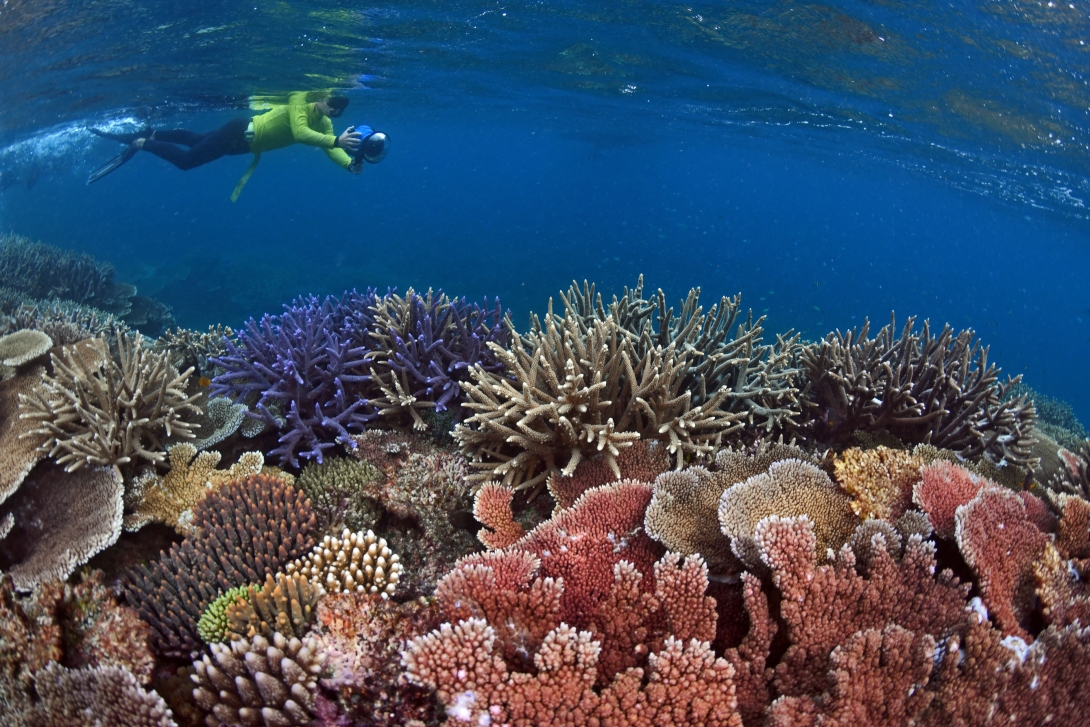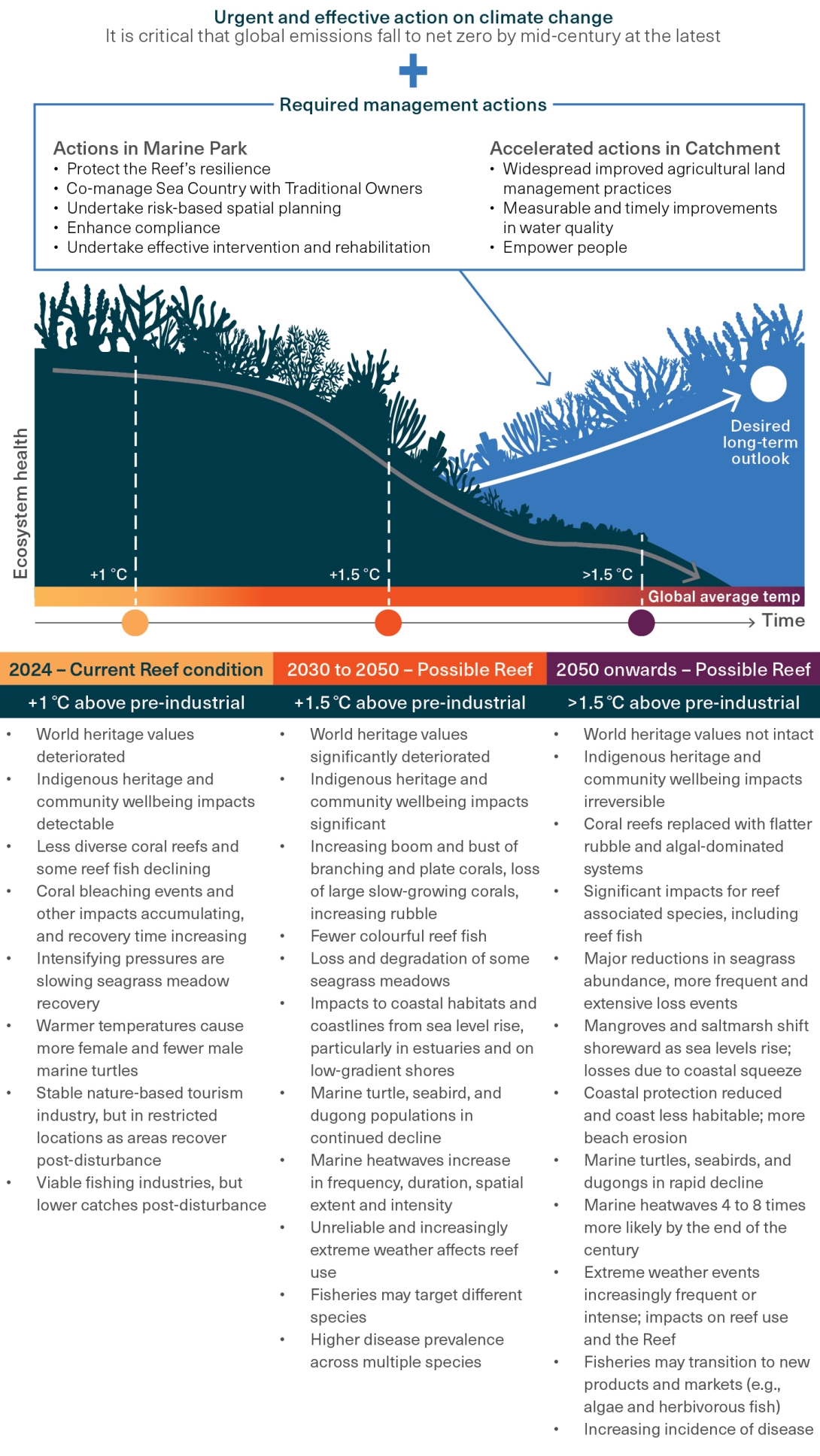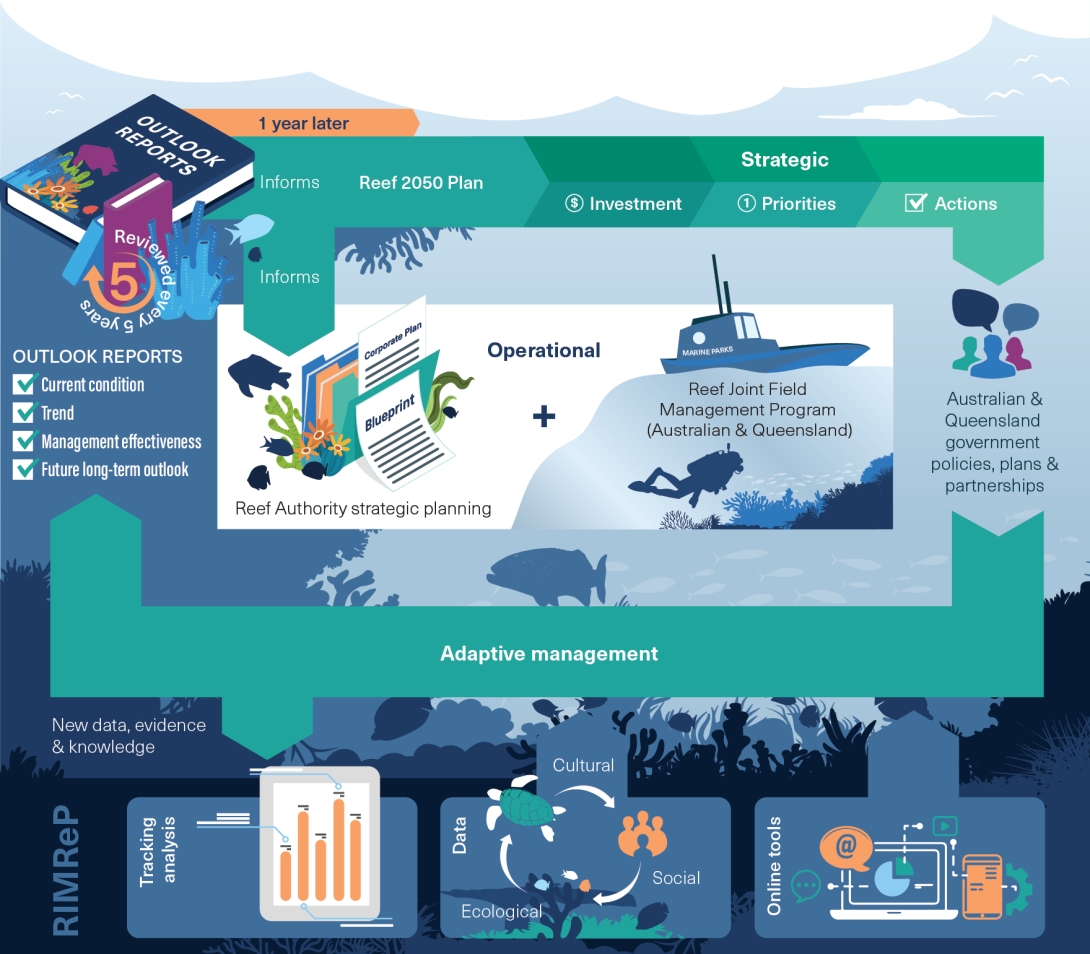The Region’s ecosystems can still recover from disturbances given sufficient opportunity. However, cumulative pressures associated with human-caused climate change and other escalating drivers (such as population growth and catchment development) are narrowing recovery windows. Warming has already brought significant impacts, and repeated widespread coral bleaching events highlight the vulnerability of Reef ecosystems. An increase in global average temperatures to 1.5 degrees Celsius above pre-industrial levels is expected in the near-term irrespective of cuts to greenhouse gas emissions.1157 Such a scenario would see substantial changes occurring to the Region’s ecosystems and associated community benefits, and every increment of additional warming would increase the projected severity of impacts.159,1157 Without strong global action to curb greenhouse gas emissions, coral reefs are likely to become extremely diminished within the next 20 to 30 years.165,2017 People and Reef-dependent industries need to prepare for this change.

Figure 10.2 shows two possible futures for the Region, in the medium term (2030 to 2050) and long term (beyond 2050). These possible long-term outlooks are indicative and based on information presented in previous chapters of this report.
Effective responses involve emissions reductions and local actions in the Region and its Catchment
Whether the Region’s condition continues to deteriorate depends primarily on immediate national and global action on climate change, combined with effective management of remaining risks that originate within the Region and its Catchment, and the Region’s resilience. Resilience-based management (Figure 10.3) that reduces threats and identifies and prioritises management actions that protect and build the Reef’s capacity to withstand and recover from disturbances will become critical.1984 Actions that protect foundational species, such as controlling coral predators, are important in the face of increasing and compounding threats.187 Likewise, the rate and scale at which water quality can be improved is a critical factor for nearshore habitats at a regional level. A steadily increasing Catchment population means use of the Reef will grow in hotspots across the Region. Effective responses will require agility in Marine Park management and compliance and continued improvement in the management of activities in the Catchment that influence the Region.
Figure 10.2
Future pathways for the Great Barrier Reef Region
The two outlook pathways shown provide examples of what the future might look like depending on
whether key risks are adequately mitigated within required timeframes. The pathways are indicative
and based on a large body of evidence from the previous chapters. Mitigating risks requires action on
climate change and management actions in the Great Barrier Reef Marine Park and the Catchment.
Reef condition and social values have already changed and will continue to change. Some change to
the Reef is inevitable, but a more positive outlook pathway is still possible if global, regional and local
mitigation and management actions are accelerated and implemented in time.

Given the scale of the challenges, it is critical that management actions are prioritised to optimise resource allocation, maximise impact and manage risk in alignment with long-term goals. In particular, the immediacy of the threat of rising ocean temperatures to coral reefs requires managers to consider a range of novel active and targeted interventions to support reef resilience, limit declines and promote recovery processes (Boxes 5.4 and 8.1). Implementation of effective interventions at scale may slow the rate of deterioration and allow time for development of further interventions, natural adaptation and further global action on climate change.2158 Effective and timely mitigation of compounding risks will require adaptive management approaches and cutting-edge decision-support systems (Figure 10.3 and Box 10.1).
The long-term outlook for the Reef hinges on immediate global action on climate change and the effectiveness of management in the crucial decades ahead, during which warming already locked into the global climate system will have profound effects on the Region’s ecosystems. By protecting the natural and heritage values of the Region, the lifestyles and livelihoods of the communities who live on its coastline and the intrinsic value to the global community will also be maintained. Prioritising actions that promote Reef recovery processes and limit further decline will improve the Region’s long-term outlook.
Figure 10.3
Adaptive management cycle for the Great Barrier Reef
Adaptive management is an important part of enabling resilience-based management. It entails the continuous collection and use of information to iteratively update management strategies, both immediate and longer-term. RIMReP = Reef 2050 Integrated Monitoring and Reporting Program. Source: modified from a diagram produced for the Reef Authority by Dr Sue Pillans.



